Bruce Schaefer
One Saturday in July, 10 of us met at the Einstein statue in DC for a course on street photography with Essdras Suarez, the camera ninja who has regaled us twice with presentations as our invited speaker. He has won 3 Pulitzer prizes for photos taken during headline events around the world the past 25 years. Over the next 4 hours, he would struggle mightily to impart some of his tricks; it was like a panther trying to teach lapdogs.
Instruction began even before we had fully gathered. As we waited for 2 more of our group, a car pulled up on Constitution Avenue and disgorged a bride and bridesmaid. The bride, in full fluffy white gown, proceeded down Constitution, and Essdras perceived a photo opportunity not to be missed. Anticipating – correctly – that she would cross Constitution at the crosswalk just ahead, he tried swiftly to position us all, cameras ready, just ahead of her, telling us to catch her in the crosswalk surrounded by the black and white crossing stripes. I caught the tail end as she reached the other side and disappeared into the Mall. But we all saw the possibilities, had we been ready.
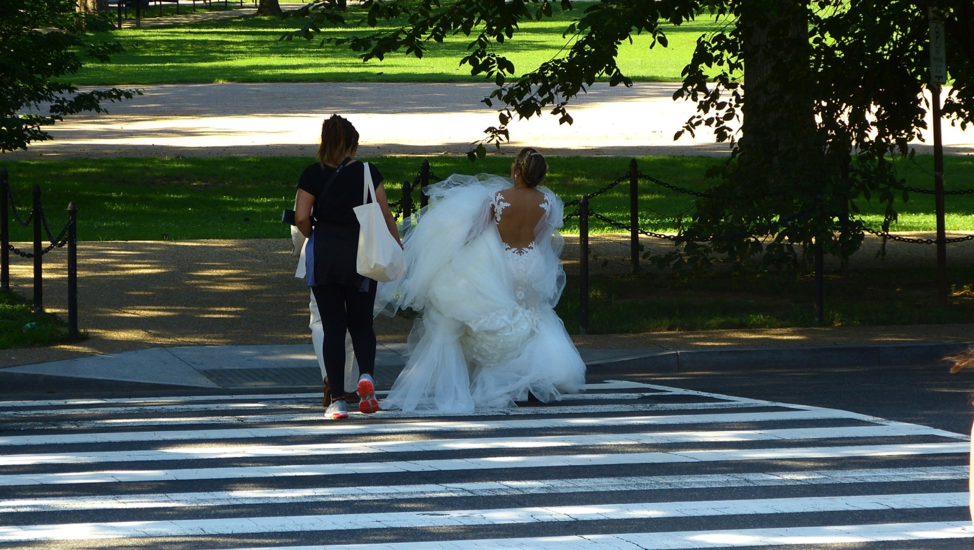
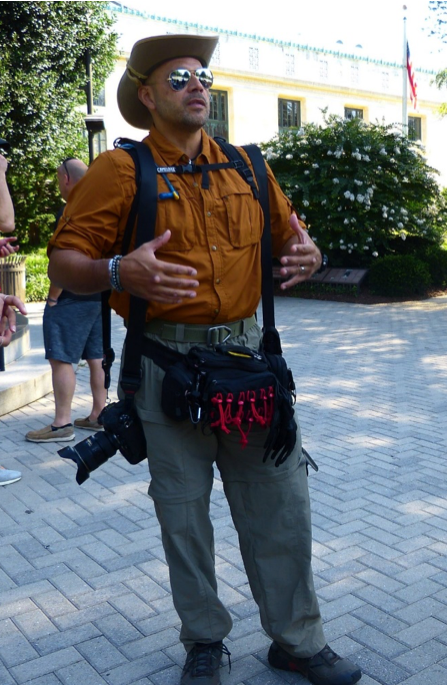
Essdras is always ready. He carries 2 DSLRs, one off each shoulder, hanging below the hips at arms’ length. He always shoots burst-mode to ensure nothing is missed. He can shoot from the hip, overhead, at floor level without sighting, and capture usable images. He is that good.
He showed us how to do it with a picture of the Einstein monument. He challenged us to capture the statue framed by something. We looked around for tree branches, traffic signs, holes in bushes. None were any good. Then he pointed out a bench across from the statue: a simple affair formed by 2 concrete uprights and a concrete lintel across them. He walked behind it, bent over and dropped his camera one-handed to ground level in the portrait position, and fired off several shots without looking. And there was Einstein, perfectly framed on 3 sides by the bench.
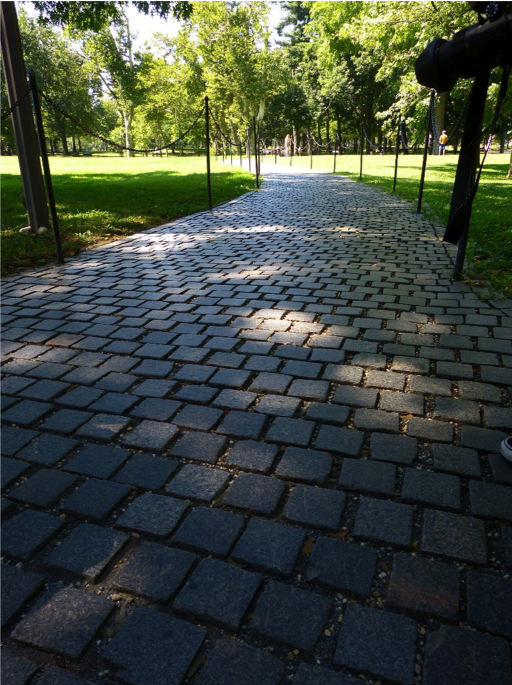
Crossing Constitution Avenue, he showed us how to do the same by holding our cameras in one hand, dangled in the portrait position, down to street level and shooting without looking. He told us the cameras are balanced to be held that way. All of us got usable pictures of the cobblestone pathway leading to the Vietnam wall.
At the Wall, he reminded us that the foto opps here are not of the Wall but of the visitors, and to look for emotional moments in people’s faces. For this, he emphasized the use of long lenses, to capture people discretely, without getting in their faces. I don’t recall any shots of note coming out of that day.
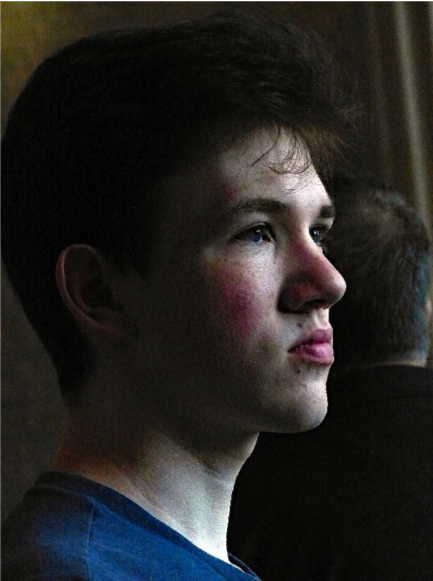
We next went up to the Lincoln Memorial, where again, he reminded us that the subject here would be, not the statue but the visitors. He pointed out how the monument filters light coming in so that people leaving the inner sanctum become bathed in a gorgeous light even at midday. So we picked out a kid who was facing away from the statue and into the light, exposed for his face, darkening everything else, and got these great street portraits.
Moving outside again, we got instructions on capturing silhouettes – for which he posed – and the possibilities presented by building columns: capturing people as they move between the bright light and shadows created by them. I think most of that lesson was lost on us.
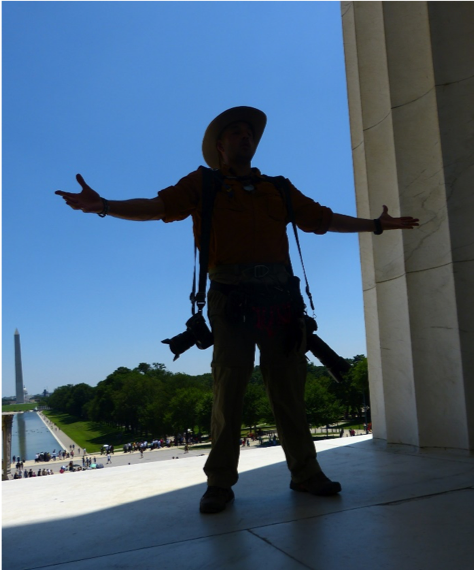
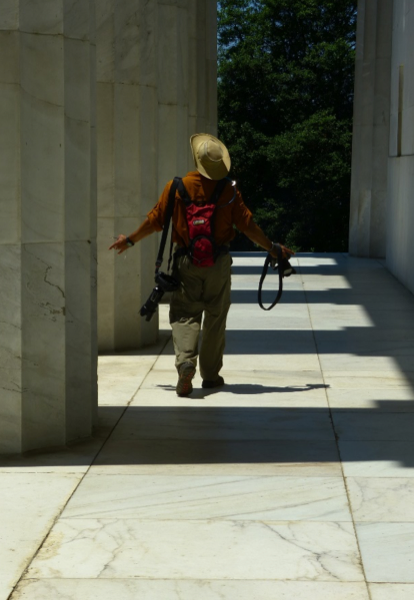
Our last trek was to the Korean War memorial where he coached us on shooting the soldier statues and reflections in the wall there.
In between stops, Essdras lectured on theory: the Bubble of Perspective and his Einstein Round Trip theory. The former deals with our usual perspective: from eye level and center moving outward. The latter explains what makes an eye-catching image: it presents new information to the brain, requiring closer scrutiny. Old data gets passed over.
In fact nearly every minute of our 4-hour walk was filled with advice, not only about exposure, composition, and technical tricks, but also – and more importantly – developing situational awareness, an ability to imagine a scene before you from different perspectives, and the habit of breaking your perceptual habits. In other words, try something new every time out. His mantra when on a shoot is, “Keep moving, keep shooting, keep adjusting.”
Everyone on this walk felt they had gained more today than on any previous guided tour. The lapdogs learned some new tricks.
He really is that good.
